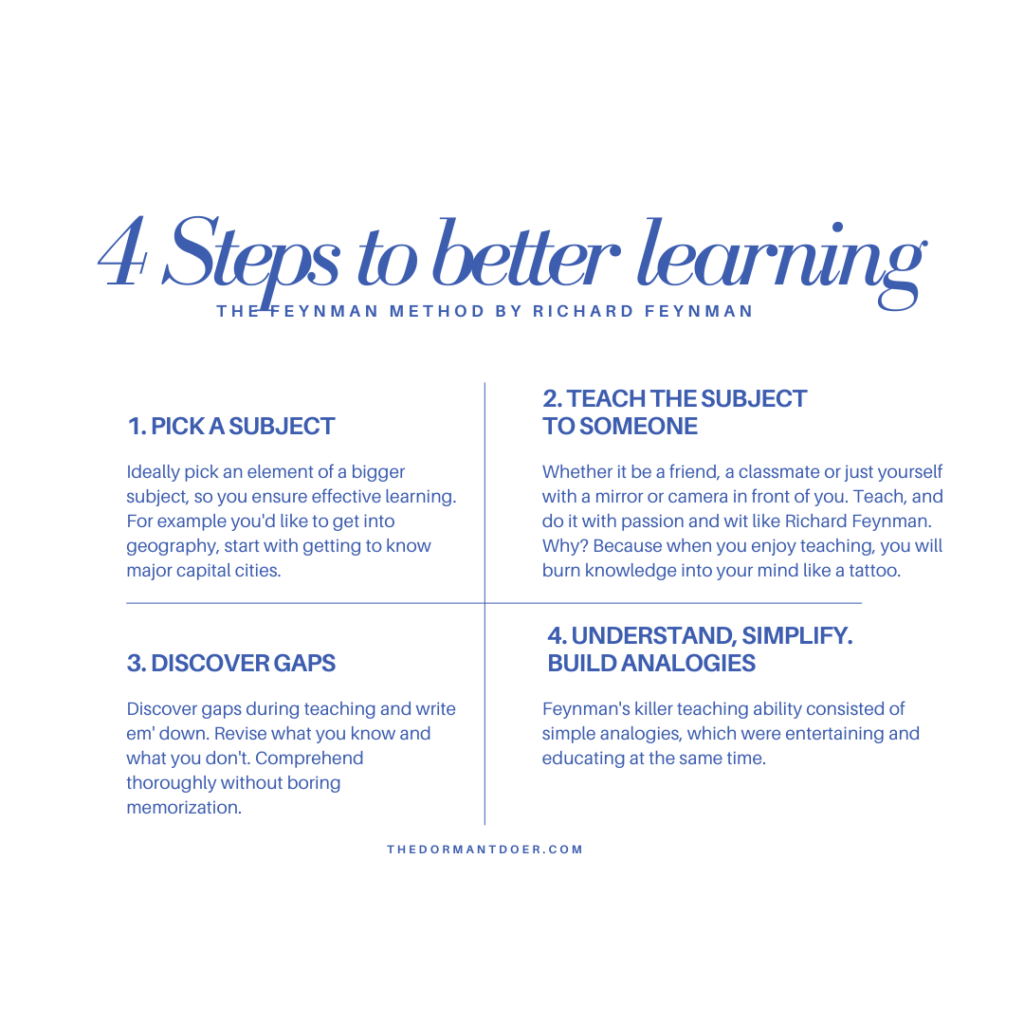Hack The matrix with Feynman: How to learn anything
What if I told you, that most of what you learned at school about how to learn is blatant rubbish? What if you can learn anything you want, without plain automated recalling, but true, satisfying comprehension? Isn’t it the desire for all of us, whether student, working professional or mother and father, to learn with excitement and to keep knowledge like we’d pick apples from a tree? May I introduce: The four steps of ultimate learning by Richard Feynman!

So who's Feynman?
Richard Feynman started out as highschool prodigy and went to MIT with 17. With his humorous, dedicated and humble spirit he became known as physicst due his major contributions in quantum physics. In 1965 Feynman was co-awarded for the physics nobel price. Brittanica writes: “Feynman rules joined Feynman stories in the everyday conversation of physicists. They would say of a promising young colleague, “He’s no Feynman, but….” His fellow physicists envied his flashes of inspiration and admired him for other qualities as well: a faith in nature’s simple truths, a scepticism about official wisdom, and an impatience with mediocrity.
Feynman died in 1988 after a long fight with cancer. His work, spirit and unique teaching style will forever remain with us. If you’d like to get a glimpse of his personality, watch this short clip.
1. Pick a Subject
Let’s say you’d like to become a Geography buff. If you start out with every capital on this globe, write down what you know already. Afterwards note the gaps of what you didn’t know so far.
2. Explain it to others
Now the real spell comes into play. Neuroscientists already figured out, that if we teach information, it sticks much better. The authors of “Make It Stick” called it “elaboration”. When we retrieve information and transmit it verbally, strong neural pathways are created and allow us to store knowledge longer and better.

3. Revise and Discover Gaps
While teaching to yourself or others, write down what you don’t know. Do it as simplified as possible. The beauty lies in simplicity and even Feynman once narrated “If you can’t teach it to a freshman, it’s not simple enough”.
4. Understand, Simplify and build Analogies
Richard Feynman’s key strategy lied in his extraordinary analogies. He conveyed knowledge with his whole body. When he talked about little things, he almost shut his eyelids. When he talked about the vast Universe, his eyes were wide open. Feynman used the whole range of gestures, mixed it with an ounce of humor and echanted his students. On the other side Feynman renounced complicated terms and narrated as simple, so that even a freshman would understand complex matters.


Wow amazing blog layout How long have you been blogging for you made blogging look easy The overall look of your web site is magnificent as well as the content
bahis siteleri sikis vurgunyedim.esqaUmrd77L8
porn siteleri ewrjghsdfaa.ibGizgE6BezZ
house porn wrtgdfgdfgdqq.wETj0LsbaZKU
porn wrtgdfgdfgdqq.f0tRTlYKT8nY